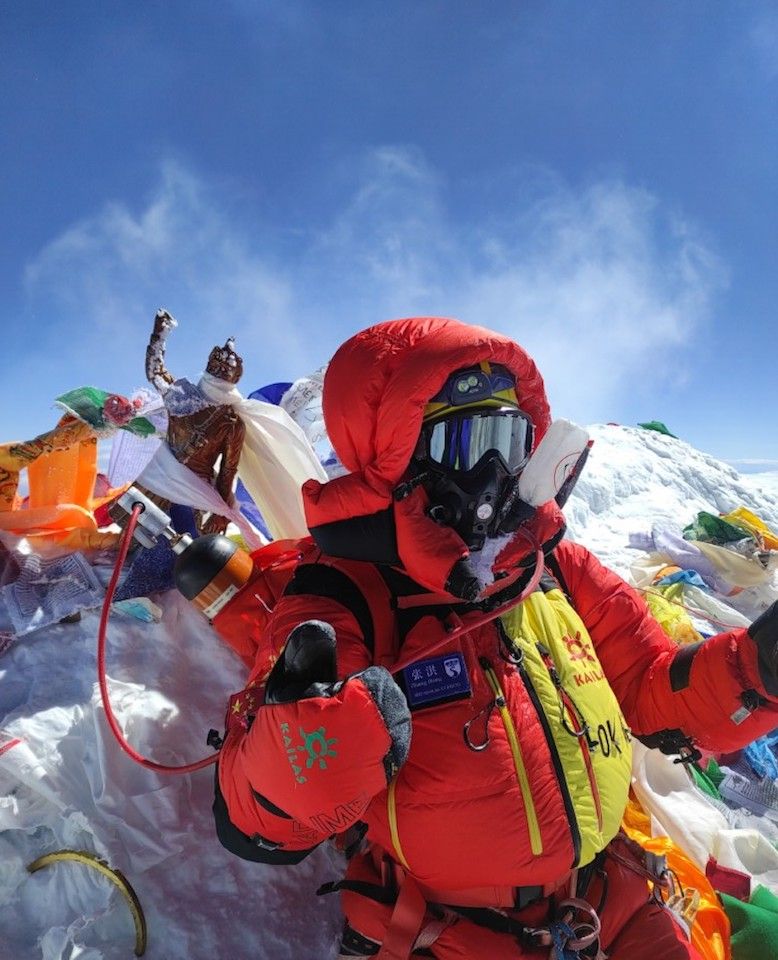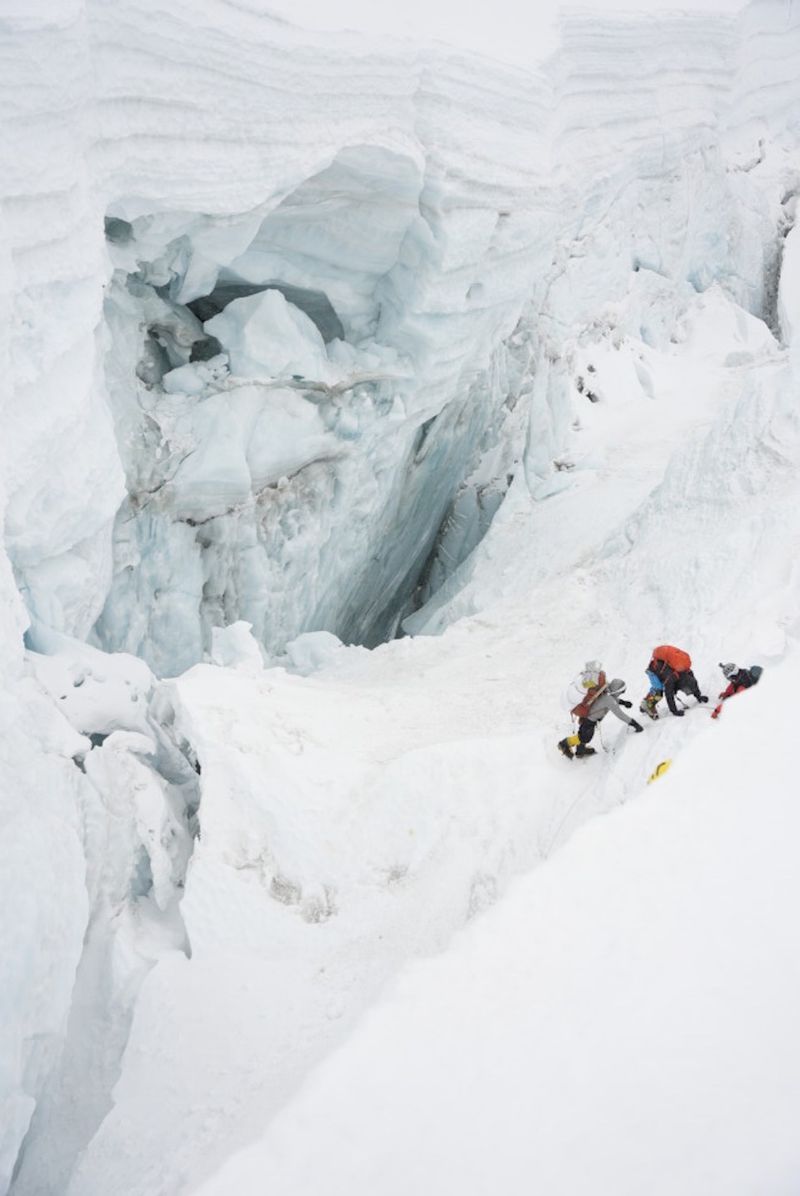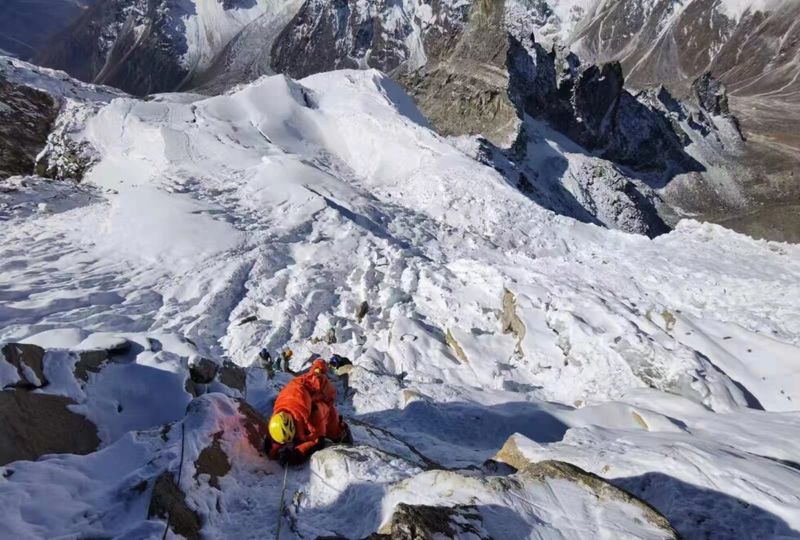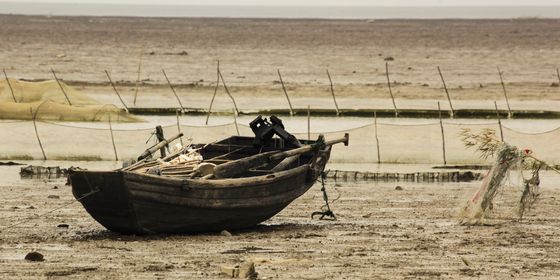Zhang Hong talks to TWOC about being first blind Chinese person, and third blind person in the world, to summit earth's tallest mountain
“Vibrations from avalanche.” “Cracking ice.” “Biting wind mixed with snow [that] hit us like waves.” Zhang Hong describes his journey to and from Mount Qomolangma, the Tibetan name for Mount Everest, using a panoply of sounds, smells, and the feel of thin, frigid air in his nostrils—because he is blind.
A native of Peiling, a small town near Chongqing in west-central China, Zhang lost his sight at the age of 21 due to glaucoma. He and his wife had lived in several cities including Shanghai and Chengdu, before moving to Lhasa to work as physical therapists. There, he met mountaineer Luotse, who shared with him the story of Erik Weihenmayer, the first blind person to reach the summit of Qomolangma. This ignited Zhang’s desire to become a mountaineer.
When just about everyone around him thought he was crazy, Zhang started working towards his goal. Over the past six years, he has reached the summits of mountains including Muztagh Ata (7,546m) in northwestern China, Chomolhari Kang (7,034m) on the China-Bhutan border, and Qizi Peak (6,206m) close to Lhasa.
Finally, on May 24, 2021, the 46-year-old summited Qomolangma—the third blind person in the world, and the first from China, to accomplish that feat. Quarantining in Kathmandu after his journey, Zhang speaks to TWOC about his ascent to the highest peak on Earth and the transformation it spurred in him.
What did you feel when you reached the summit of Mount Qomolangma?
I had imagined and even acted out numerous times how excited I would be or what I would do the moment I reached the summit. But when I finally made it, I felt none of the excitement or ecstasy that I had imagined, because I was clear about my goal: to safely descend. So my strongest feeling on the summit was that I had only accomplished half of what I set out to do; I was far from achieving my goal. I had to remind myself that I couldn’t stay long here, or let my mood fluctuate because the greater challenge was yet to come.
As the old saying goes, it is easy to go uphill but difficult to go downhill. On Mount Qomolangma, 60 to 70 percent of accidents happen during the descent. People might be mentally more relaxed, less focused, and physically exhausted. If you have sight, you can see more of the dangers that lie below, which might add to your fear and lead to problems. On the day of our climb, bad weather made it even more difficult.
On the summit, the Sherpa guides and I took a few photos before I hurried us to descend. Since we were relatively calm, we made it down fairly smoothly. Before we left Mount Qomolangma, I told myself that it was not time to relax yet, even at the basecamp. Not until we reached Kathmandu did I feel at ease, that finally the journey had come to an end.
So like I said, you have to know what your goal is. Without a clear goal, you might end up with terrible consequences.
How did you and your guide develop the rapport to accomplish such a daunting task together?
At a few rare sections of the trail, when the path was wide enough for us to walk side by side, I could hold onto the guide’s hand. But for the most part, on Mount Qomolangma, I couldn’t do that, and had to listen to instructions, “There is a crevasse 30 centimeters ahead of you” or “Turn 45 degrees to the left.”
My guide Qiangzi and I have been working together since 2017 when we climbed Muztagh Ata together. But actually, during training, we had lots of misunderstandings and even conflict that led to trust issues. It could be that because I have been without my sight for over 20 years, I didn’t always 100 percent believe in what people around me told me to do.
For example, when crossing a crevasse, Qiangzi would tell me, “Zhang Hong, take a 30-centimeter step,” but I would take a 50-centimeter step or an even bigger one, because I thought that might be safer. But the landscape is not designed according to my imagination. The crevasse is only 30 centimeters, so if I took a step over 40 centimeters, I might land in another danger zone. Or Qiangzi might tell me, “Take a small step of 20 centimeters and you’ll be fine,” but I might still probe around with my hiking pole to make sure before moving. Not only does that slow us down, but Qiangzi might also wonder: Does Zhang Hong not trust me?
After a series of conflicts like these, I learned to trust what he says, because I have no choice. Apart from his instructions, I have no other means or tools that could help me gauge the situation. Later, when climbing Mount Qomolangma, I was able to have absolute trust in Qiangzi. He would tell me to take a 20-centimeter step, and I would take a 20-centimeter step.
How has mountain climbing changed you?
I have learned to care more about others.
For example, I used to take it for granted that Qiangzi would give me instructions nonstop, because I can’t see. He never told me that he was in fact constantly exhausted from speaking at high altitude where both oxygen and moisture are extremely scarce, and I just accepted it that way.
But thoughts like this gave me anxiety and other emotions I can’t even explain. Over time, I learned to care for him as well. I would tell him: first, you don’t have to speak so loud; second, you don’t have to keep speaking, just tell me once and I’ll remember. When I started to care about his feelings instead of asking him to speak to me continuously, we collaborated even better.
I used to think that I was supposed to get help, because I can’t see and therefore can’t perform many tasks. But now I know I can gain more by not taking others’ help for granted. At the base camp, we had to put on high-altitude mountaineering boots. These double-layered boots are very heavy, and you need to put on the two layers separately, which might take half an hour and lots of physical effort. I thought I could ask the Sherpa guides to help me with it, so that I could save some energy, but this idea also made me feel uneasy. In the end, instead of thinking I’m supposed to get assistance, I learned to put on the boots and the harness myself, and I felt so much satisfaction and happiness.
What is your next goal after Mount Qomolangma?
First, I need to show lots of love for my wife. I used to always focus on myself and ignored her feelings. Through the climb of Mount Qomolangma, I learned to care more about others—I should take the initiative to care for my family.
Second, during the climb I learned about the Sherpas, whose only occupation for generations has been to serve as mountain guides. Behind the mountaineers’ glory of reaching the summit are the Sherpas’ hard work. During my two-month stay here, I heard of many Sherpas who faced a lot of pressure or even lost their only means of income because of disabilities caused by frostbite or injuries.
Therefore, I want to raise awareness of this group of people and do something for the Sherpas who became disabled because they helped others climb. After all, I am also disabled, and I know what disability could mean to them and their families.
Thirdly, climbing Qomolangma is not the end. It might be the starting point for blind people to enjoy a fuller life. Next, I will keep training to improve my physical and mental strength, and I might try the “7 + 2” challenge: the highest peak of each continent as well as the Arctic and Antarctic. It’s a message to people with disabilities that we are capable of achieving all that non-disabled people can, of bringing positive influence to others. Don’t confine yourself due to disabilities; you can explore a fuller life and realize your own ambitions.
You have said that people with disabilities often limit their own capacity to overcome difficulties. What do you mean by that?
I lost my sight at 21, and for a long time after that, I closed myself off from the outside world and even attempted suicide a few times. I completely lost hope for the future and couldn’t face reality. I was so lucky to have met my wife at that time, who accompanied me during the most painful time of my life. Even with her, it still took me several years to reemerge from the darkness.
I imagine there might be more people with disabilities who were like me. I was always complaining and felt everything was too difficult to do: “How would I be able to do that? I can’t see. I can’t even get out the door. I can’t do it. This is what I am.”
Later, I learned that if we only think about ourselves and how others should protect or help us, then it would be so difficult and tiring to live. But if we think more about others and feel grateful for any support and help we receive, we can absorb the positive energy from our surroundings and our heart becomes lighter. I believe, whether you have disabilities or not, first you have to have strength in your heart before you can become who you want to be.
All images courtesy of InHope Pictures

















